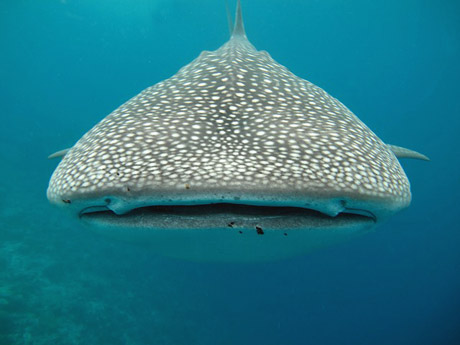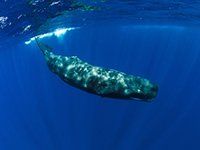SCUBA News~~~~~~~~~~~~~~~~~~~~~~~~~~~~~ Welcome to SCUBA News. This month: sea snakes, Myanmar and new diving frontiers.
What's New at SCUBA Travel? | ||||||||||||||||||||
| ||||||||||||||||||||
6 Great Liveaboard Deals - Save up to 50%More liveaboard diving deals, to some of the best diving destinations in the world, specially selected for us by Divebooker.com, the liveaboard specialists.
Creature of the Month: The Sea SnakeWith the most potent venom of all snakes, you'll mostly find sea snakes in shallow, tropical waters.
Sea snakes only drink fresh waterIt has been a long-standing dogma that all sea snakes satisfy their drinking needs with seawater, their internal salt glands filtering and excreting the salt. However, scientists have now found that sea snakes refuse to drink saltwater even if thirsty - and then would drink only freshwater or heavily diluted saltwater. The research may help explain why sea snakes tend to have patchy distributions and are most common in regions with abundant rainfall.
One theory is that sea snakes that spend their lives in the open ocean drink water from the "lens" of freshwater that sits atop saltwater during and after rainfall, before the two have had a chance to mix. That would explain why some seawater lagoons, where the waters are calmer due to protection from reefs, are home to dense populations of sea snakes - the freshwater lens persists for longer periods before mixing into saltwater. Most sea snakes never return to the land from the sea. The exception is sea kraits which come ashore to lay eggs.
70 Species of sea snakeOf the 15 living families of snakes, four contain marine species. Altogether there are 70 known species of sea snake.
Only bite when provokedThe bite of the sea snake is painless. However, half an hour later stiffness, muscle aches and spasm of the jaw or pain in the bitten limb may occur. This can be followed by blurred vision, drowsiness and respiratory paralysis. Sea snakes are are generally not agressive and will not bite unless provoked. Even then they tend not to use their venom, and their short fangs cannot penetrate a neoprene wetsuit. Although many are shy and will not approach divers, some can become very curious - swimming close to you to get a better look. If this happens to you remain calm and enjoy watching these elusive animals. Diving news from around the World
| ||||||||||||||||||||
| SCUBA News is licensed under a Creative Commons Attribution 4.0 Unported License. This means we are happy for you to reuse our material for both commercial and non-commercial use as long as you: credit the name of the author, link back to the SCUBA Travel website and say if you have made any changes. Most photos though, are copyright the photographer. Please get in touch for details. Photo credits: Tim Nicholson, Jill Studholme, MedRecover Research Group/CC BY, SSI, DepositPhotos, divebooker.com UNSUBSCRIBING ADVERTISING CONTACTING THE EDITOR |
Sunday, March 23, 2025
SCUBA News - #296 - March 2025
Subscribe to:
Post Comments (Atom)























No comments:
Post a Comment